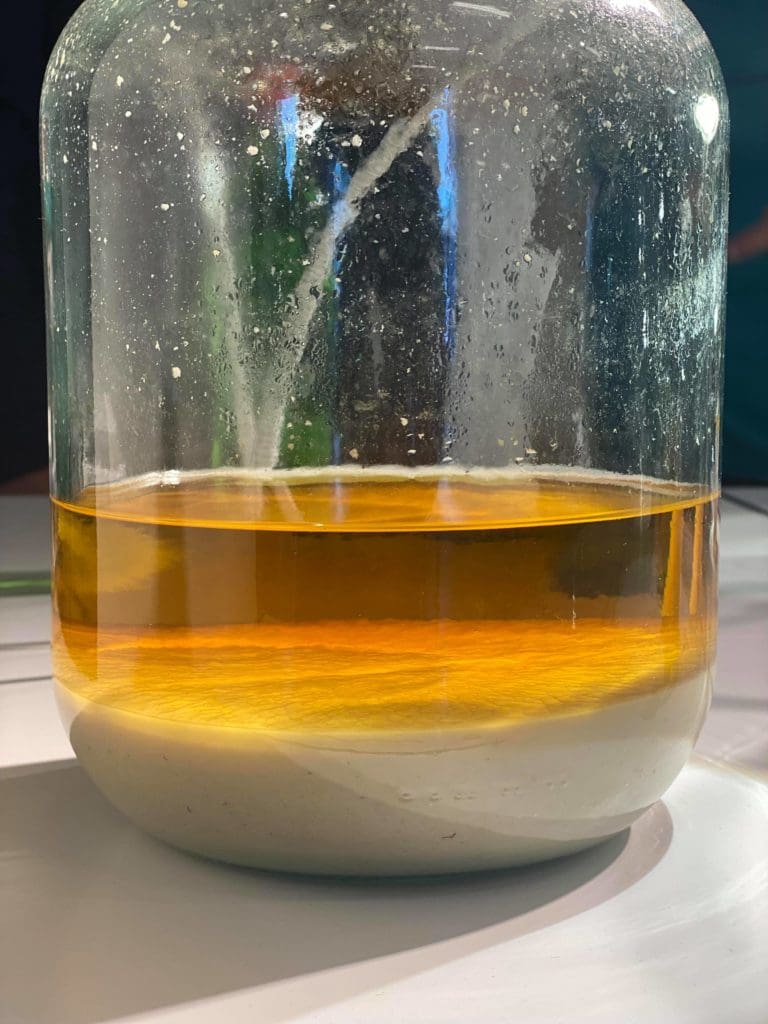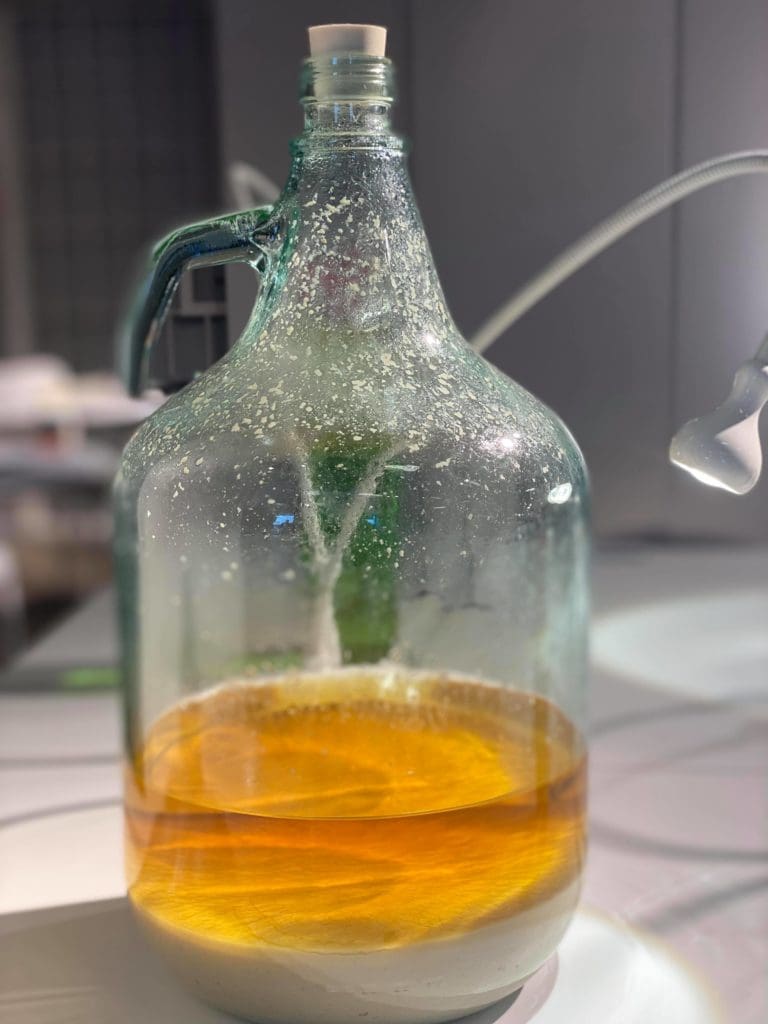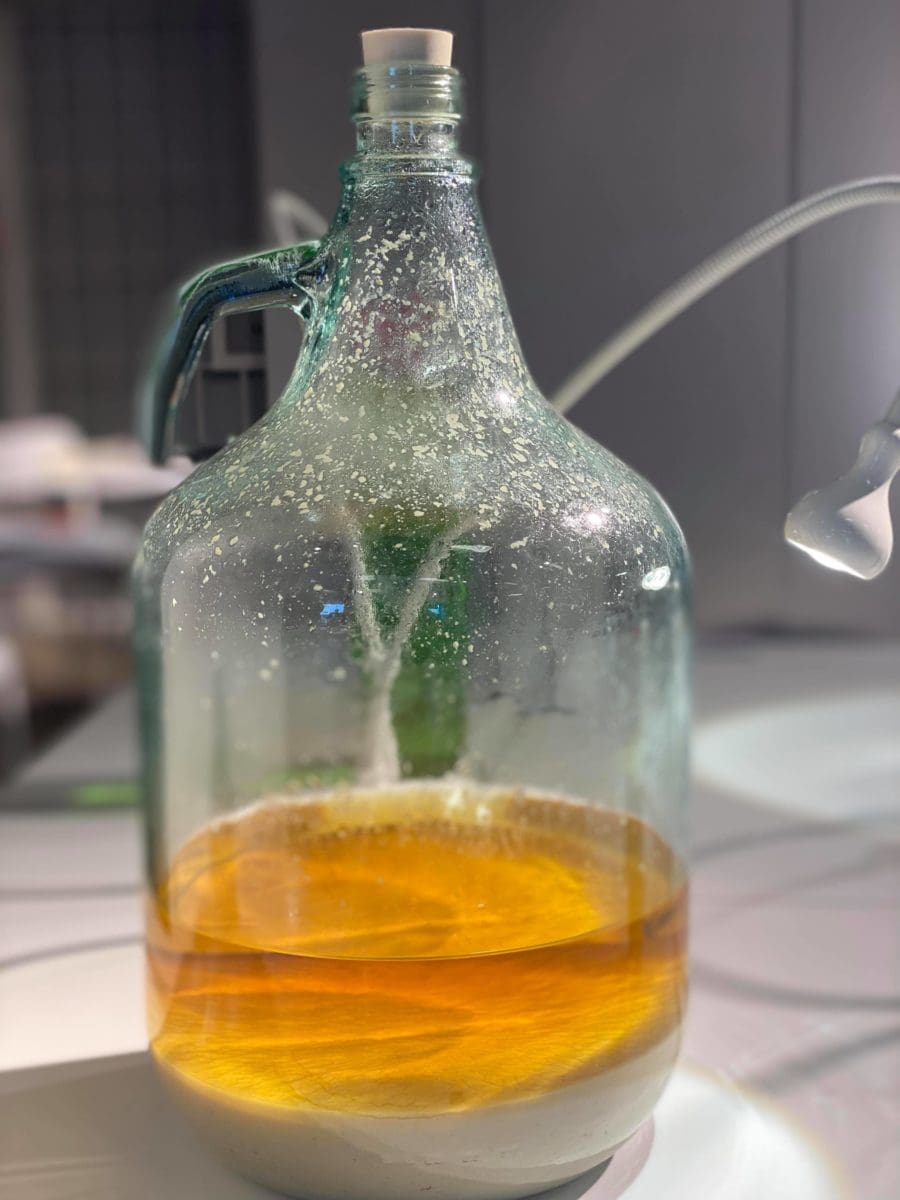Ttongsul is a traditional Korean medicine with a 9% alcohol content. The poo of a human child between 4 and 7 years old is refrigerated for 3-4 days, mixed with water, divided into smaller pieces, and fermented overnight. The vat with the poo starts to smell incredibly strongly of feces, even worse than the first day of fermentation. The poo/water mixture is poured through a sieve and is mixed with 70% boiled non-glutinous rice, 30% glutinous rice, and yeast. The non-glutinous rice contains a lot of protein, important for the fermentation process. The glutinous rice is there for its supposed anti-inflammatory and pain-relieving properties, as well as to improve the taste. The fermentation process activates the good bacteria and kills the bad bacteria.
The resulting mixture is left to ferment for at least seven days in a clay pot, wrapped in a blanket to maintain a temperature of 30 to 37 degrees Celsius. If not fermented enough, it’s dangerous to drink, but when perfectly ripe, this alcoholic drink is claimed to cure pain, broken bones, bruises, inflammation, and even epilepsy. The yellow-brownish liquid is strained and looks like a combination of sewer slime and vomit, potentially with small pieces of poo still floating around. The taste is a bit sour and similar to rice wine. Poo wine has a faint poo smell and can leave a poo smell on your breath. It contains about 9% alcohol. The smell and the visual appearance of this alcoholic drink are worse than the actual taste of it.

A different production method for making poo wine is pouring Soju, a distilled grain alcohol, Korean Rice Wine, into a pit of chicken, dog, other animal feces, or human feces, and leave it for months to ferment. Medicinal herbs and cat bones were also added, supposedly to improve health.
Is Ttongsul still used in the Korean medicinal system?
Ttongsul has a long history in Traditional Korean Medicine but is almost never made anymore in modern day South Korea. It is not part of the official Korean medicinal system as far as we have found. If you ask the average person in South Korea today about Ttongsul, they haven’t even heard about it, and have never tasted this ancient Korean drink. One of the few people that still know how to make Ttongsul is Dr. Lee Chang Soo, a Traditional Korean Medicine doctor. He was interviewed in VICE and showed a reporter how to make poo wine. He has mentioned an old Korean saying, “Even dog feces is never around when you want it”, meaning when you need it for fertilization or for making whine. Different types of feces wine were used as a cure in Korea hundreds of years ago. Bat feces were used to treat alcoholism, chicken feces for stomach illness. Dr. Lee Chang Soo specialized in traditional medicine like Ttongsul in South Korea and gets donations of human child feces regularly from his patients.
The VICE video about Ttongsul has gotten plenty of criticism, therefore we feel that it’s important to highlight once again that Ttongsul is in no way something that is used in modern day South Korea. It was an unusual cure one hundred years ago, and even more so today.

Mentions of Poo wine and human feces in Traditional Chinese Medicine
Li Shizhen, a Chinese medical scientist in the Ming Dynasty, mentioned in his book Compendium of Materia Medica a Chinese medicine handbook from 1596:
人屎釋名人糞、大便。氣味苦,寒,無毒。主治時行大熱狂走,解諸毒,搗末,沸湯沃服之。傷寒熱毒,水漬飲之,彌善。新者,封疔腫,一日根爛(蘇頌)
“Humans release celebrity feces and stool. The smell is bitter, cold, and non-toxic. For people who have gone mad, or to detoxify all kinds of poisons, smash the powder, boil the soup and take it. Typhoid fever and poison, drink water stains, it will make you good. The new one, the boil is swollen, and the root is rotten in one day (Su Song).
He also mentioned:
童便氣涼撲損瘀 虛勞骨蒸熱嗽除
“Children’s feces possesses cooling properties, for falls, cuts and bruises. Cures fatigue and cough”.
The Compendium of Materia Medica from the 16th century mentions several instances of fecal matter and urine, from both humans and various animals, as a cure to all sorts of illnesses and weaknesses. Eastern medicine as a whole has taken some inspiration from this ancient book. It is likely that the poo wine from Korea is derived from this book in some way.
The 4th-century Chinese medicine handbook by Chinese Ge Hong describes consuming human feces as a way of treating food poisoning and diarrhea. Equine feces was believed to have medicinal efficacy in Japan and have been traditionally used as a therapy since the Sengoku period in the 16th century.


